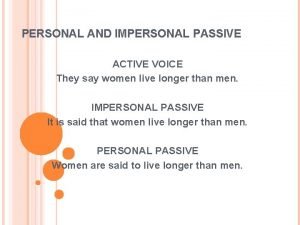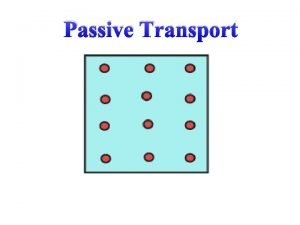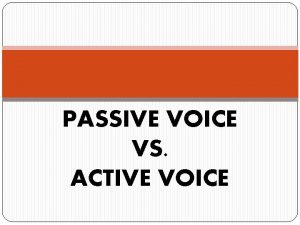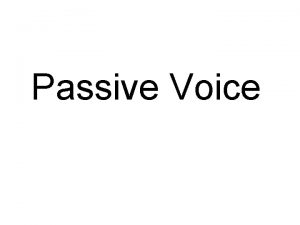5 The Passive Review and E Art Heist
















- Slides: 16

5 The Passive: Review and E Art Heist and Edvard Munch’s Scream Focus on Grammar 5 Part V, Unit 13 By Ruth Luman, Gabriele Steiner, and BJ Wells Copyright @ 2006. Pearson Education, Inc. All rights reserved.

Scream Stolen on August 23, 2004 Two masterpieces by Edvard Munch were stolen from the Munch Museum in Oslo yesterday. The Scream and Madonna were grabbed by two masked thieves. A guard was threatened with a gun. None of the thieves got caught. Only their car was later recovered and parts of picture frames were found.

Art Heist Experts speculated yesterday that the paintings had been stolen to blackmail insurance companies. However, neither painting was insured against theft. It is generally agreed that it will be impossible to sell either painting on the open market. It's the second time in a decade that a version of The Scream has been stolen. Another version was stolen in 1994 and recovered three months later.

Present and Past Passive sentences are formed with be or get + past participle. It is generally agreed that it is impossible to sell a stolen painting on the open market. A guard was threatened. None of the thieves got caught.

Other Passive Verb Forms You can form passives with many verb forms, including present perfect (has been + past participle) and past perfect (had been + past participle). It is the second time that a version of The Scream has been stolen. The paintings had been stolen to blackmail insurance companies.

Use of the Passive 1 Use the passive when you don’t know who performed the action or when it is not important to say who performed it. Two masterpieces by Edvard Munch were stolen from the Munch Museum.

Use of the Passive 2 Use the passive to avoid mentioning who performed the action. Neither painting was insured against theft.

Use of the Passive 3 Use the passive to focus on the receiver or the result of an action instead of who performed it. The Scream and Madonna were grabbed by armed thieves. A guard was threatened with a gun.

Practice 1 Change the sentences from active to passive. Example: Masked thieves stole two masterpieces. Two masterpieces were stolen by masked thieves. 1. The robbers took the two paintings off the gallery walls. The two paintings were taken off the gallery walls (by the robbers). 2. So far, no one has claimed responsibility for theft. So far, responsibility for theft has not been claimed (by anyone). 3. We have not protected our cultural treasures adequately. Our cultural treasures have not been protected adequately.

The Passive and Direct Objects Most commonly, the direct object of an active sentence is the subject of the corresponding passive sentence. Thieves stole two masterpieces by Edvard Munch. Direct Object Subject Two masterpieces by Edvard Munch were stolen.

The Passive and Indirect Objects Museum visitors sent many letters of complaint to the museum. Indirect Object Subject The museum was sent many letters of complaint. An indirect object is sometimes the subject of a passive sentence.

Practice 2 Change the sentences from active to passive. Use the indirect objects as subjects of the passive sentences. Example: Many people sent letters to the museum. The museum was sent letters by many people. 1. Someone gave a floor plan of the museum to the thieves. The thieves were given a floor plan of the museum. 2. Norwegian authorities immediately assigned the crime investigation to the Oslo Police Department. The Oslo Police Department was immediately assigned the crime investigation (by Norwegian authorities).

The Passive with Get The passive with get is more informal. It is conversational and used in informal writing. 1. Nobody in the museum got injured or killed during the robbery. 2. None of the thieves got caught.

Passive Causatives Use have or get + object + past participle to form passive causatives. Passive causatives talk about services that people arrange for someone else to do. Did the thief get his hair dyed before the robbery? Did he get his mask made or did he make the mask himself? O B J E C T

Form active sentences and passive sentences with have or get. Practice 3 Example: I cuthair myself. cut I get my hair cut. get hair cut . wash car 1. I wash my car myself. get washed I getcar my car washed. 2. paint house I paint my house myself. have painted I have house my house painted.

References Copyright © 2006 Pearson Education and its licensors. All rights reserved. Photo Credits: Edvard Munch: The Scream 1893 tempera on board Munch Museum, Oslo Artwork: © Munch Museum/Munch - Ellingsen Group/ARS 2005 Photo: © Munch Museum (Andersen/de Jong) Photo: © 2005 The Munch Museum/ The Munch-Ellingsen Group/ Artists Rights Society (ARS), NY Photo of the Munch Museum: © Munch Museum (Andersen/de Jong)
 Sein ich bin du bist
Sein ich bin du bist Sociaal huis knokke
Sociaal huis knokke Plot diagram for the pearl
Plot diagram for the pearl Hallo wie heißt du
Hallo wie heißt du Wie heißt du arbeitsblatt
Wie heißt du arbeitsblatt Was heißt prioritäten setzen
Was heißt prioritäten setzen Was heißt low cost
Was heißt low cost Die familienmitglieder
Die familienmitglieder Mobey heist
Mobey heist Passive voice present continuous and present perfect
Passive voice present continuous and present perfect Personal and impersonal passive examples
Personal and impersonal passive examples Passive and active voice
Passive and active voice Xen and the art of virtualization
Xen and the art of virtualization Hát kết hợp bộ gõ cơ thể
Hát kết hợp bộ gõ cơ thể Slidetodoc
Slidetodoc Bổ thể
Bổ thể Tỉ lệ cơ thể trẻ em
Tỉ lệ cơ thể trẻ em































